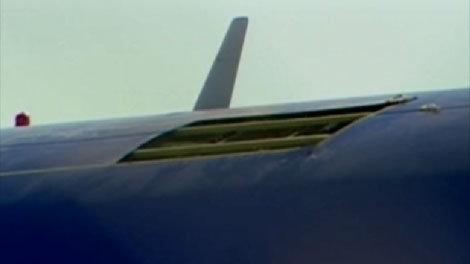RENTON, Wash. -- The fuselage tear aboard a Southwest Airlines 737 last Friday was not something totally unexpected for Boeing, but the company said it came much sooner than it should have.
It all comes down to aluminum -- how much the stress the metal can take under the circumstances it is used.
The National Transportation Safety Board, Boeing and other air safety experts will work together to find answers as to why the hole opened up far earlier than expected in the 737-300 shortly after the plane left Phoenix, Ariz..
This situation right here is a surprise to us. We do not expect aircraft in service today to rapidly decompress in flight, said NTSB Chairwoman Deborah Hersman.
That's because in the wake of the April 1988 near disaster aboard an Aloha Airlines 737-200, Boeing and other airplane manufacturers made design changes to try and prevent metal fatigue failure from happening again.
We are all concerned about this recent development, said Boeing's Paul Richter, the chief project engineer for Classic 737s including the -300, -400 and -500 series models. This was not completely unanticipated.
Meaning, Boeing didn't think the upper lap joint on a 737-300 was vulnerable to failure before a plane made a whopping 60,000 flights. The plane in Friday's incident tore open at just under 40,000 flights.
In an emergency airworthiness directive Tuesday and in a company-issued service bulletin Monday, both the FAA and Boeing told airlines they need to inspect their older planes now.
The inspections involve lap joints on the upper left and right sides of the fuselage, where the Southwest jet tore a five-foot long gash. These are joints where two pieces of aluminum skin overlap each other and are held together by two rows of rivets. It's at that lower rivet line where the Southwest jet ripped.
Boeing wants airlines to inspect those sections that are about 50-feet long. With two inspectors, that will take about eight hours to accomplish.
For a plane with 35,000 or more flights, the inspections are required within five days, with more inspections every 500 flights beyond that. 737 classics with between 30,000 and 35,000 flights will require a one-time inspection within the next 20 days and repeat inspections after 35,000 flights or until a final fix is found.
Richter said the inspections are designed to be conservative and to assure safety in the skies.
In a related note, the skin along the lower rivet line will bend slightly under pressurization, said Richter. That can add additional stress and potentially aggravate cracking between rivets. This bending issue was designed out of newer so-called Next Generation 737s, including -700, -800 and -900 series jets.
The inspections are likely to remain in place until the NTSB's investigation is complete and a full analysis of the torn skin is thoroughly analyzed, including looking at any potential factors that corrosion might have played.
Some 80 737-300, -400 and -500 series jets are subject to the Boeing Service Bulletin and the FAA airworthiness directive. All are planes that have already hit that 30,000 cycle mark. Seventy-eight of the planes belong to Southwest. The other two are 737-400s flown by Alaska Airlines.
Another 95 jets belonging to foreign airlines are also subject to the same inspections. Hundreds of other jets could also be pulled into the inspection cycle as they age.


